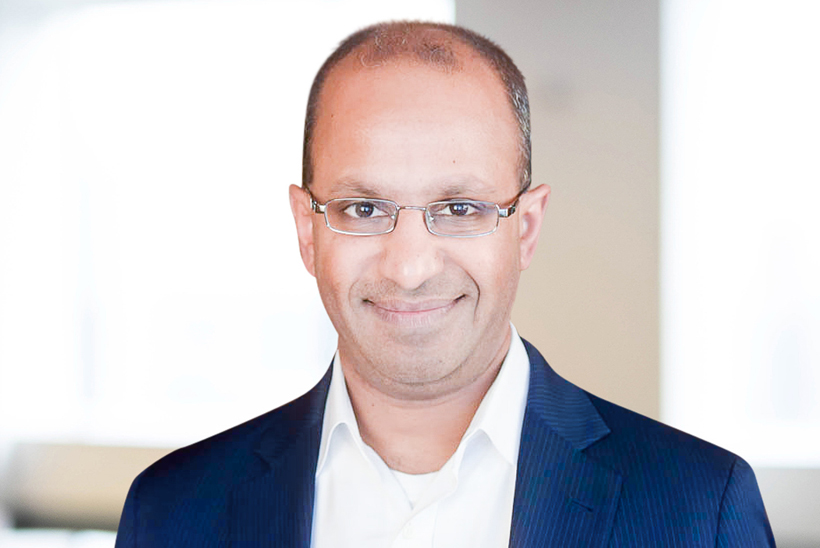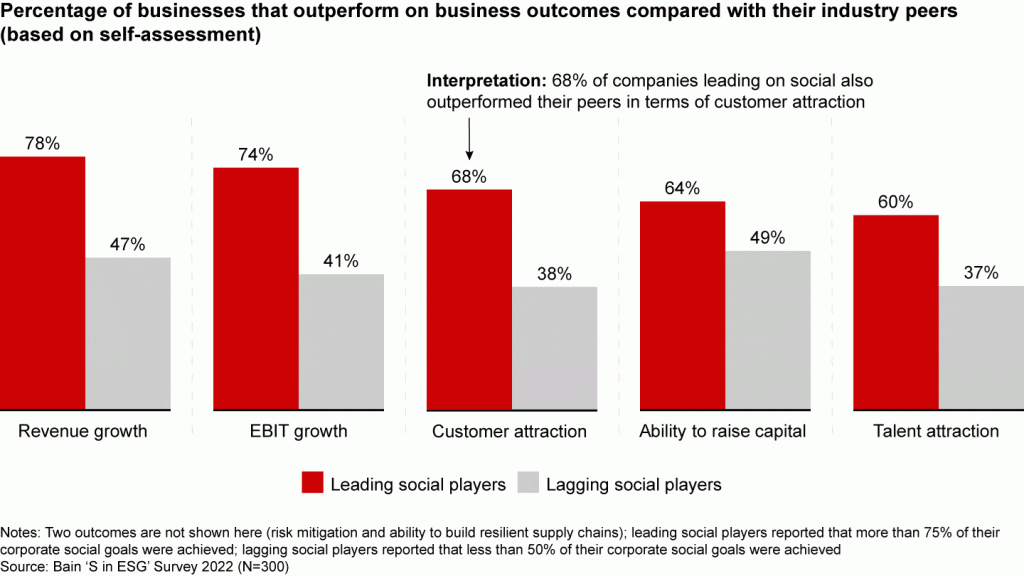July 11, 2023
Strategic CEOs are finding a place for social championing within the context of business performance, connecting “urgent” issues with “commercial logic” in the pursuit of value creation.
Moving beyond virtue signalling and risk mitigation, forward-thinking organisations are adopting a sustainable stance on environmental, social and governance (ESG) topics through linking company activity with four key stakeholders – community, customers, employees and suppliers.
“The companies that lead on social issues, such as DEI [diversity, equity and inclusion] and socially responsible supply chain practices, don’t view these efforts solely as risk mitigation,” said Karthik Venkataraman, Partner in DEI at Bain & Company.
“It’s the opposite, in fact. The leaders in this space have found ways to directly tie their social efforts to the commercial logic of their businesses, opening new opportunities for value creation by better serving all of their stakeholders. They see a symbiotic relationship between the concepts of ‘doing well’ and ‘doing good’.”

According to Bain & Company findings – surveying a base of almost 300 high-performing CEOs – 85% of business leaders view social issues as “urgent” concerns for the companies they run. Within that context, 60% of executives believe the primary role of their organisation is to either create “positive outcomes for society” or “balance the needs of all stakeholders”.
For the cynical minded, pursuing social causes is a luxury given the daily weight of responsibility to customers, employees and stakeholders.
Yet for those seeking a business case, the data suggests organisations leading on social outperform competitors across revenue and EBIT growth – at 78% vs. 47% and 74% vs. 41% respectively. This also extends to acquiring new customers (68% vs. 38%) and attracting talent (60% vs. 37%) as well as the ability to raise capital (64% vs. 49%).
“Most business leaders are well aware of the risks of violating the new social expectations for business,” Venkataraman added. “Certainly, they do not want to find their brands and companies attacked on social media or named in the press in damaging contexts.
“Companies that have taken the lead in addressing social issues report that doing so drives better business outcomes in a variety of ways.”

Another key consideration for CEOs is that one of the most influential stakeholder groups in the charge for change is in fact, customers.
“Customers have made it clear that they care about the social ramifications of their brand and product choices,” Venkataraman added.
So much so that 52% of consumers are more likely to buy from a brand that commits to combatting racism and more than half are more likely to buy from a brand that commits to human rights.
“When it comes to engaging in social issues, the challenge for many executives lies in figuring out how exactly to transform action on these issues into economically sustainable business performance,” noted Jenny Davis-Peccoud, Partner and Global Head of Sustainability and Responsibility at Bain.
“The ‘S’ in ESG comprises a wide range of issues, which vary by organisation. We recommend starting with a focus on four critical groups of stakeholders – local communities, customers, employees, and suppliers – and identifying actions that both address social issues for these groups and deliver results for the business.”
Key questions for CEOs to ask include:
Delving deeper, Davis-Peccoud outlined four areas of opportunity to help CEOs translate action on social issues into an economically sustainable business performance:
Inform your opinion with executive guidance, in-depth analysis and business commentary.